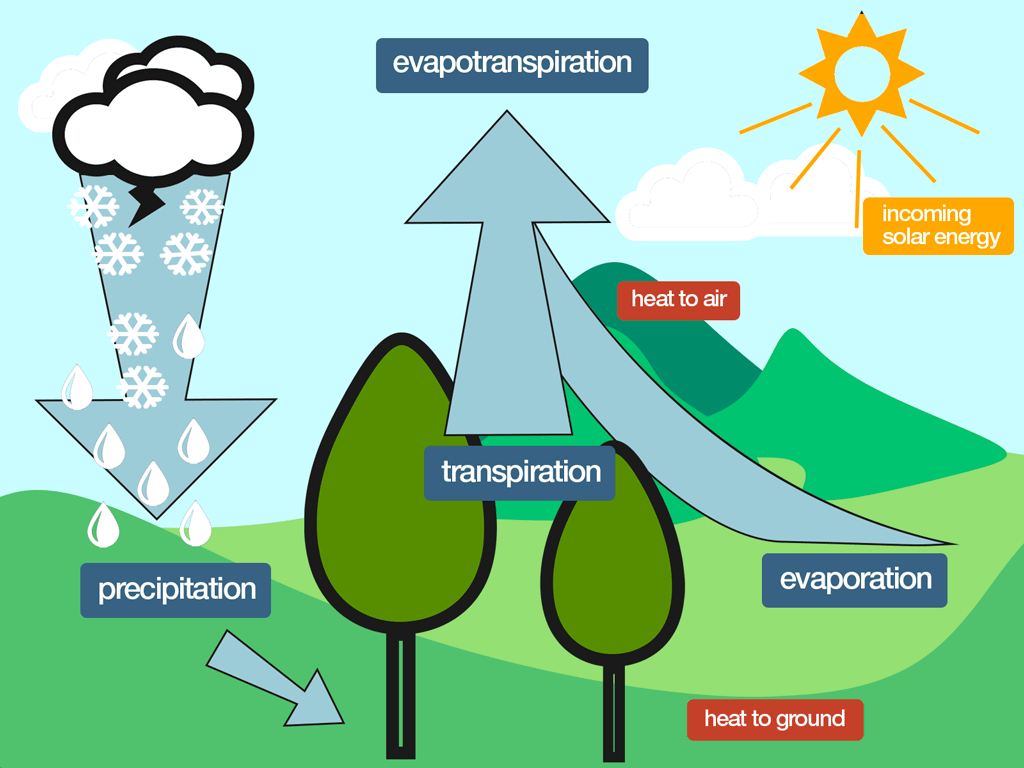 Patrick Cavanaugh (California Ag Today Network, Clovis, CA) said to respond to current debates on water use by agriculture their radio network is educating listeners about transpiration of moisture by plants. Almonds and all other crops transpire most water they take up, he said. Allan Fulton, an Irrigation and Water Resources Farm Advisor with UC Cooperative Extension in Redbluff, CA, has been their network’s resource person. Fulton said, “The truth is, plant transpiration is a necessary biological process. The water cools the tree so it stays healthy, the water exits the leaves, and the special cells that the water exits are called stomata. While they are open, allowing water to transpire, carbon in the form of carbon dioxide is coming into the plant to be used in photosynthesis, making sugars and carbohydrates.
Patrick Cavanaugh (California Ag Today Network, Clovis, CA) said to respond to current debates on water use by agriculture their radio network is educating listeners about transpiration of moisture by plants. Almonds and all other crops transpire most water they take up, he said. Allan Fulton, an Irrigation and Water Resources Farm Advisor with UC Cooperative Extension in Redbluff, CA, has been their network’s resource person. Fulton said, “The truth is, plant transpiration is a necessary biological process. The water cools the tree so it stays healthy, the water exits the leaves, and the special cells that the water exits are called stomata. While they are open, allowing water to transpire, carbon in the form of carbon dioxide is coming into the plant to be used in photosynthesis, making sugars and carbohydrates.
That’s what is used to make the fruits and the nuts that we eat.” If plants are not adequately watered allowing them to transpire, they don’t get enough carbon dioxide causing defective fruits and nuts (smaller, shriveled or cracked) that the typical consumer does not want to buy. Fulton continues, “As we converted to pressurized systems, micro sprinklers, and mini sprinklers, we have a lot more control over how much water we put on at any one time.” It is much like when rainfall comes. Water applied can be measured in tenths, or 1 or 2 inches at most. “We do not put water out in acre-feet, or depths of 4 to 6 inches at a time anymore. As a result, the water doesn’t penetrate the soil very deeply, maybe only 1 or 2 feet each irrigation. We are very efficient with the water, but we have to irrigate very frequently because we put it out in small doses. That is why we see irrigation systems running a lot. So, definitely we are using systems that try to stretch water and not waste it.” Fulton explains, “Most of the time, at least 90% of the water that we apply is being transpired – taken up through the tree and being transpired so that photosynthesis can happen.
We do get a little bit of loss from surface evaporation from the wet soil, but we try to control that with smaller wetting patterns or with drip confined wetting patterns. When you think about it, during the heat of the day in the afternoon, many systems don’t run because of energy costs. There are incentives not to pump in the middle of the afternoon. Those that do try to confine the wetted area to limit evaporation. The hot hours of a day make up about 4 hours of a 24-hour cycle so we irrigate at night-time or in the early morning hours to lessen evaporative loss.” With his educational effort about transpiration, Patrick’s goal is to improve the public understanding of why water is so critical to producing the food we eat.
